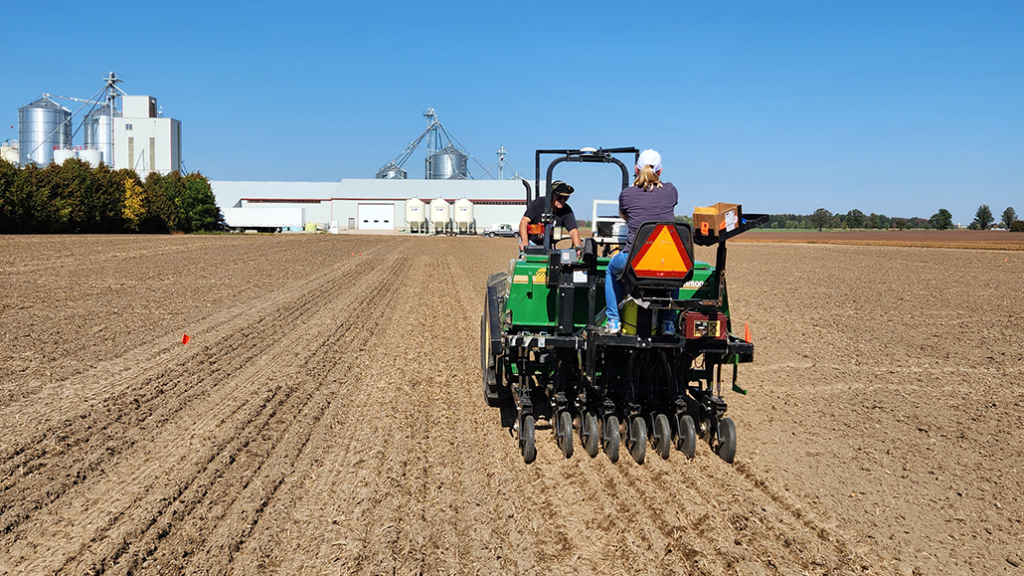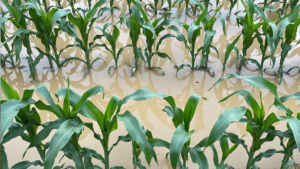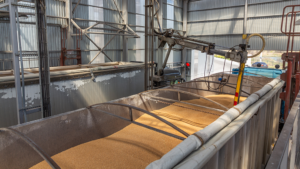More winter barley acres
HIGHER YIELDS AND MARKET OPPORTUNITIES

SIGNIFICANT JUMPS IN yield potential and a desire to expand rotation options are making new winter barley varieties a more attractive rotational option in Ontario — the direct result being an increase in winter barley acres across the province.
IMPROVED WINTER SURVIVAL
According to Joanna Follings, cereals specialist with the Ontario Ministry of Agriculture, Food and Rural Affairs, the spike in yield potential has largely been driven by improvements in winter survivability.
Indeed, poor survivability and the preponderance of thin stands in spring — and the resulting poor yields — was a big reason the crop has been historically maligned in Ontario. Remedying this issue by incorporating new European genetics has made quite a difference and aligns a more general interest in better rotational diversity, similar to what many growers have done with crops such as winter canola.
“Some interest comes from a higher diversity, spreading risk across multiple crops, and also looking for other opportunities in the cereal space. In places like Lambton, where winter canola works, for example, winter barley fits well with that rotation. Some growers in Lambton have had really great yields with winter barley,” says Follings. She adds the crop is also ready for harvest a couple of weeks earlier than winter wheat, making double-crop soybeans a more viable option.
NEW VARIETIES REGISTERED
Two new varieties have made headway — Calypso, which makes good livestock feed, and Ruzena, a two-row variety that can be malted. This comes after decades of no new genetics being registered in the province.
Elevator, grain merchant, and seed supplier Cribit Seeds has been working with SeCan — the registrant of Calypso and Ruzena — trialling winter barley genetics. According to Quentin Martin, Cribit Seeds co-owner, and Julia Kimber, seed sales and marketing manager, their 2023 sales of winter barley seed are nearly double the previous year’s sales.
“The last Ontario-bred barley would have come from [the University of] Guelph, but even that would have been the early 80s. Ontario trials of certified winter barley varieties were phased out 30 years ago,” says Martin. “It’s hard to say what percentage of acres new genetics make up, but it’s safe to say a very high per cent of acres will be new genetics.”
Martin and Kimber say such impressive genetic improvements now make it easier to ask farmers to grow the crop.
“The farmer in us, when asking someone to grow a crop, it’s hard to grow something like spring barley at 1.5 tons per acre. That’s a hard ask. This adds another option to increase the per cent of cereals in the rotation. Winter barley yields two times what spring barley does. It’s not often you get to say something is going to yield twice as much,” Martin says.
WINTER BARLEY MARKETS
Kimber says winter barley is valued for its nutritional properties (similar to corn, but with higher fibre) and softer, potentially more absorbent straw, meaning a significant part of the market comes from the livestock sector. There is an opportunity to grow the number of livestock producers who employ the grain in their feed rations. Martin adds further research and analysis into the protein and starch levels afforded by different genetics could help the grain make inroads with “high octane” dairy cattle herds.
The craft beer market is also an existing market and one with growth potential. Indeed, Kimber says the demand for made-in-Ontario barley malt remains unfilled, with product instead being largely imported from Western Canada and elsewhere. The challenge going forward is not necessarily a lack of Ontario barley, though, but a lack of Ontario malt houses — the malting process being a critical part of the preparation of barley for beer making.
“You have to have a malt variety. There’s only one variety of malt barley, and only one craft maltster in Ontario. Availability of craft malt has not increased with demand from breweries,” says Martin. While some winter barley can still be incorporated into the brewing process without being malted — as roasted grains, for example, it remains a small market.
“The main consumption really is pet food. Food grade, but for pets,” Martin says.
“We need to find new uses for winter barley … I think we need to see an increased use of barley in livestock rations. The historic thinking has been it was not viable because it does not compete from an agronomic standpoint. If we can double the yield, that changes things dramatically and needs to be revisited.”
AGRONOMIC CONSIDERATIONS
Despite success in bettering yield and overwintering vigour, winter barley still brings production challenges. This includes disease management, other issues common to cereals, and the need to plant with phosphorus in-furrow — the application rate to be determined based on soil type and fertility data.
Follings, Kimber, and Martin all say winter barley’s shorter planting window in early autumn is the biggest consideration. Growers interested in winter barley might consider moving to an earlier season soybean variety to improve post-harvest planting opportunities.
“Our planting window is pretty strict. We may relax the planting date going forward, or we may get stung and retract,” says Martin.
Follings says winter barley “likes to be seeded early, even before winter wheat. It is seven to 10 days before the optimal wheat planting date for any region.” If the optimal planting date for winter wheat is mid to late October, for example, the optimal date for winter barley would be early October.
“If you have edible beans, peas, or canola, it’s an easier fit. It’s hard with longer-season soybeans, though. Planting earlier is crucial for both winter survival and maximizing and optimizing yield … Winter barley might not be the best fit for everyone, but there’s definitely a great opportunity for producers if you can figure out that marketing aspect before you put it into the ground.” •
























